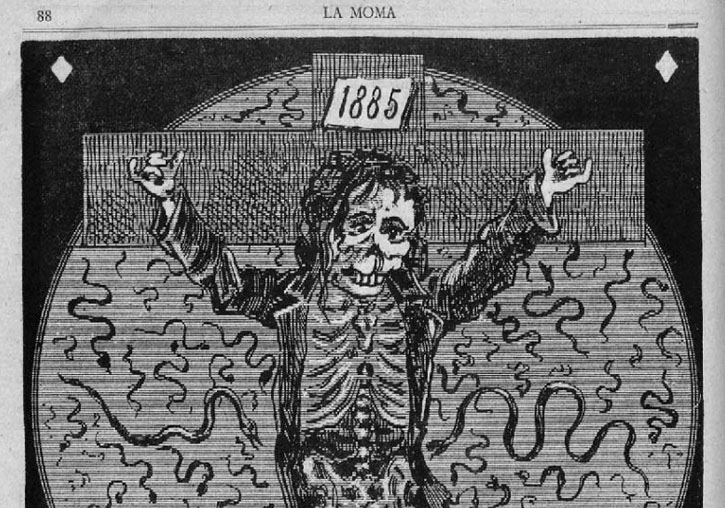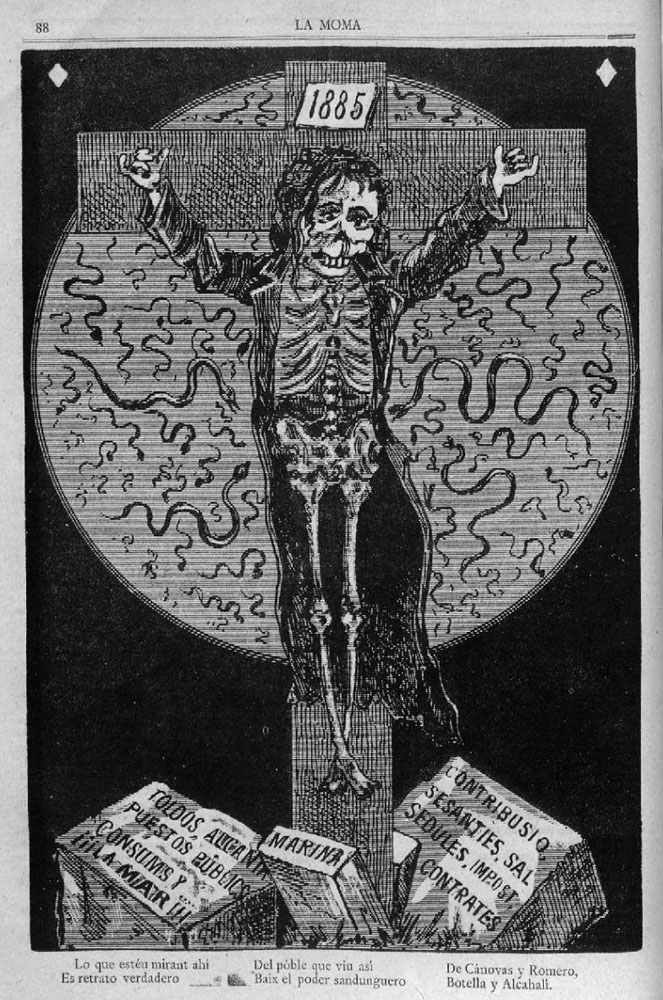The satirical press of Valencia went from criticising the measures against cholera in the 1885 epidemic to denouncing social vulnerability
- Scientific Culture and Innovation Unit
- January 27th, 2023

Jorge Ramón, a researcher at the Department of Modern and Contemporary History at the University of Valencia, has explored, through the satirical press of the late nineteenth century, how the social and media perception of the cholera epidemic of 1885 in Valencia evolved – which killed 4,919 people, 3.45% of the registered population – as it spread through the city and its surroundings. The study finds that initially the weeklies mocked the disease with a haughty perspective, in which they considered themselves mere observers, but as the cases increased, they denounced the vulnerability of the classes most exposed to the pandemic.
“In the midst of the first wave of Covid-19, I approached other world pandemics that Valencia had suffered in the past and, specifically, the serious outbreak of cholera that affected it in 1885. My interest lay in how, as the situation worsened in the city, the social and media perception of the disease, its effects on people, and the political responses to it were transformed”, highlights Jorge Ramón.
In an article published in the Historia Contemporánea magazine, the researcher has analysed various content from the local satirical press (La Moma and La Traca), together with some health reports from the Valencian council. La Traca, one of the magazines with the largest printing run in the city and which was characterised by its humour and the multiple controversies that involved it, ridiculed the institutional actions that were used against the epidemic of 1885. It also put everything in the spotlight what he considered a sample of popular superstition.
During the epidemic, magazines opted for “sarcasm, ridicule and grotesque deformation”, but the ways of applying it varied over the months. Social inequality, reinforced by different exposures and behaviours towards the disease, the lack of sanitary infrastructures or the imbrication with the immediate agricultural environment were increasingly problematised with a view to hypothetical future urban projects.
Faced with the difficulties in being able to avoid the disease and make humour about it, the weeklies chose to make fun of the institutional measures and their efficiency. To a large extent, this was due to his closeness to various currents of republicanism, criticism of the prevailing political system (the Restoration) and its main features, the monarchy and the “dynastic turn” between conservatives and liberals. At a time when the treatment of cholera was uncertain, popular unrest could be directed towards specific practices such as the sanitary cordons or the vaccination trials of Dr. Ferrán, which unleashed fears and uncertainties among the population, but also hopes of stopping the advance of the epidemic. In July 1885 there were about 200 deaths every day.
Likewise, the study explains that the transition of the media from the de-dramatisation of the pandemic to a demand for rational medical and political care for the most disadvantaged social sectors also occurred in distant latitudes, such as Rosario (Argentina). In addition, the work contextualises these processes in the legal framework of the Restoration, based on a system of supervised liberties that could imply fines, kidnapping of numbers and imprisonment of those who openly criticised the authorities and their actions.
Article: Ramón Ros, Jorge. (2022). «Cordons, vírgules i anguiles» en la ciudad. Sátiras y respuestas políticas a la epidemia de cólera de 1885 en Valencia. Historia Contemporánea. 70. 717-751. DOI: https://doi.org/10.1387/hc.21956
Annex photo caption:
1. Caricature of the people martyred by cholera and conservative political management. La Moma, June 13, 1885.
2. Map indicating the intensity by provinces of cholera in 1885 according to the number of fatalities. Philip Hauser, Epidemiographic Atlas of Cholera in Spain in 1885, Manuel Tello Printing and Foundry, Madrid, 1887 (National Library of Spain).
File in: Investigació a la UV , Cultura Científica , Facultat de Geografia i Història , Grups de recerca , Internacionalització recerca , Difusió i comunicació científica , Recerca, innovació i transferència




















